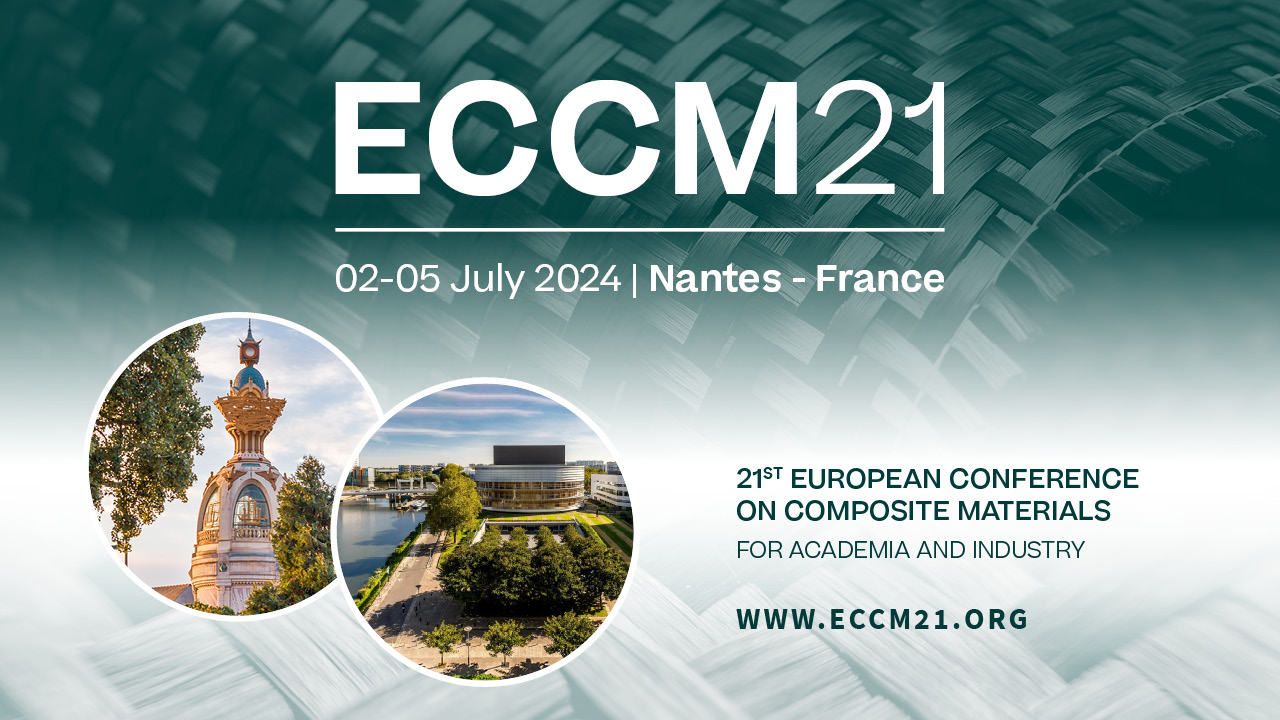Evaluation of the permeability of Carbon/Carbon composites by the image-based Stokes and Stokes-Brinkman solver PoroS
Topic(s) : Special Sessions
Co-authors :
Tania LAVAGGI (UNITED STATES), Paris Dilip MULYE (FRANCE), Elena SYERKO (FRANCE), Christophe BINETRUY (FRANCE), John W. GILLESPIE , Suresh ADVANI (UNITED STATES)Abstract :
The manufacturing of Carbon/Carbon composites consists of two steps. Firstly, the carbon fiber preform is infiltrated with a polymeric carbon precursor. Secondly, the composite is subjected to pyrolysis to convert the precursor into carbon matrix. The degradation of the precursor leads to the formation of voids within the matrix [1]. To achieve a fully densified composite, the two steps of infiltration of precursor and pyrolysis are repeated several times iteratively. Therefore, the fabrication of a part takes several months.
Permeability is a key parameter for the manufacturing of Carbon/Carbon composites as it determines the venting of the gases generated during the degradation of the precursor and the resin flow during the infiltration. The characterization of permeability can help reducing the time necessary for the fabrication of a part. However, permeability measurements with traditional techniques are not viable as it is not possible to record flow advancement within the pore network of Carbon/Carbon composites and race-tracking may affect the measurements. One suitable method is the prediction of the permeability of Carbon/Carbon composites via numerical simulations with the software PoroS [2]. PoroS is a research software developed at the Research Institute in Civil and Mechanical Engineering (GeM) at the École Centrale de Nantes and it consists of Stokes and Stokes-Brinkman solvers developed to solve 2D or 3D fluid flow equations on a representative volume element (RVE) which is generated by X-ray images of the sample or from digital twins. The advantage of PoroS for the characterization of Carbon/Carbon composites is related to the fact that it represents a non-destructive and cost-effective technique to evaluate the permeability. The software also offers the possibility to investigate separate parts of the RVE to identify the existence of permeability gradients within the structure. This information may be useful when assessing the efficacy of a particular pyrolyzing schedule to tailor the porosity development in the Carbon/Carbon composite.
In this work, the permeability of benzoxazine-based Carbon/Carbon composites is predicted with the software PoroS. The RVE for the simulations is generated by X-ray micro-computed tomography of the Carbon/Carbon composite samples. The predicted permeability by PoroS is compared to measurements via a pulse-decay experiment. In this experiment, the permeability is evaluated by recording the pressure decay versus time in a gas reservoir as the gas is evacuated through the connected pathways of the microstructure of the Carbon/Carbon composite. The comparison of predicted and measured permeability shows that PoroS represents a valid method to evaluate the permeability of Carbon/Carbon composites.
Permeability is a key parameter for the manufacturing of Carbon/Carbon composites as it determines the venting of the gases generated during the degradation of the precursor and the resin flow during the infiltration. The characterization of permeability can help reducing the time necessary for the fabrication of a part. However, permeability measurements with traditional techniques are not viable as it is not possible to record flow advancement within the pore network of Carbon/Carbon composites and race-tracking may affect the measurements. One suitable method is the prediction of the permeability of Carbon/Carbon composites via numerical simulations with the software PoroS [2]. PoroS is a research software developed at the Research Institute in Civil and Mechanical Engineering (GeM) at the École Centrale de Nantes and it consists of Stokes and Stokes-Brinkman solvers developed to solve 2D or 3D fluid flow equations on a representative volume element (RVE) which is generated by X-ray images of the sample or from digital twins. The advantage of PoroS for the characterization of Carbon/Carbon composites is related to the fact that it represents a non-destructive and cost-effective technique to evaluate the permeability. The software also offers the possibility to investigate separate parts of the RVE to identify the existence of permeability gradients within the structure. This information may be useful when assessing the efficacy of a particular pyrolyzing schedule to tailor the porosity development in the Carbon/Carbon composite.
In this work, the permeability of benzoxazine-based Carbon/Carbon composites is predicted with the software PoroS. The RVE for the simulations is generated by X-ray micro-computed tomography of the Carbon/Carbon composite samples. The predicted permeability by PoroS is compared to measurements via a pulse-decay experiment. In this experiment, the permeability is evaluated by recording the pressure decay versus time in a gas reservoir as the gas is evacuated through the connected pathways of the microstructure of the Carbon/Carbon composite. The comparison of predicted and measured permeability shows that PoroS represents a valid method to evaluate the permeability of Carbon/Carbon composites.

